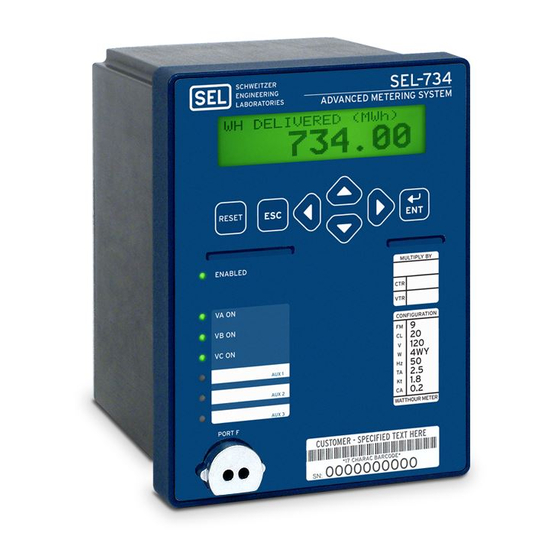
Schweitzer Engineering Laboratories SEL-734 Manuals
Manuals and User Guides for Schweitzer Engineering Laboratories SEL-734. We have 2 Schweitzer Engineering Laboratories SEL-734 manuals available for free PDF download: Instruction Manual, Quick Start Manual
Schweitzer Engineering Laboratories SEL-734 Instruction Manual (344 pages)
Advanced Metering System
Brand: Schweitzer Engineering Laboratories
|
Category: Measuring Instruments
|
Size: 6.3 MB
Table of Contents
Advertisement
Schweitzer Engineering Laboratories SEL-734 Quick Start Manual (16 pages)
Advanced Metering System
Brand: Schweitzer Engineering Laboratories
|
Category: Measuring Instruments
|
Size: 2.23 MB
Advertisement
Related Products
- Schweitzer Engineering Laboratories SEL-734W
- Schweitzer Engineering Laboratories SEL-787
- Schweitzer Engineering Laboratories SEL-700G Series
- Schweitzer Engineering Laboratories SEL-700G1
- Schweitzer Engineering Laboratories SEL-700GT
- Schweitzer Engineering Laboratories SEL-701-1
- Schweitzer Engineering Laboratories SEL-787-2
- Schweitzer Engineering Laboratories SEL-787-2E
- Schweitzer Engineering Laboratories SEL-787-4X
- Schweitzer Engineering Laboratories SEL-749M

